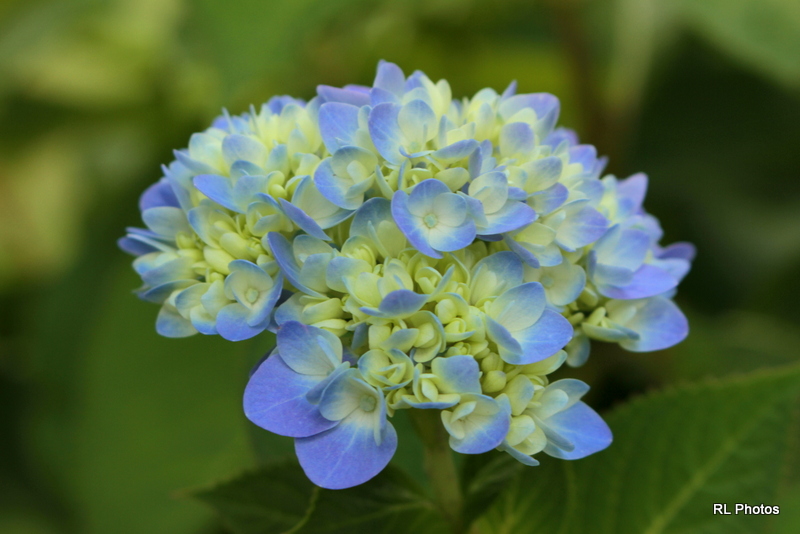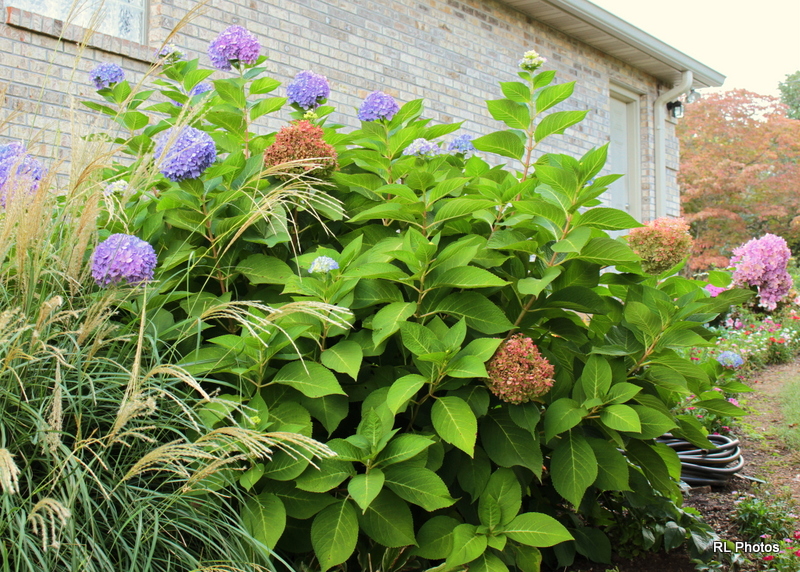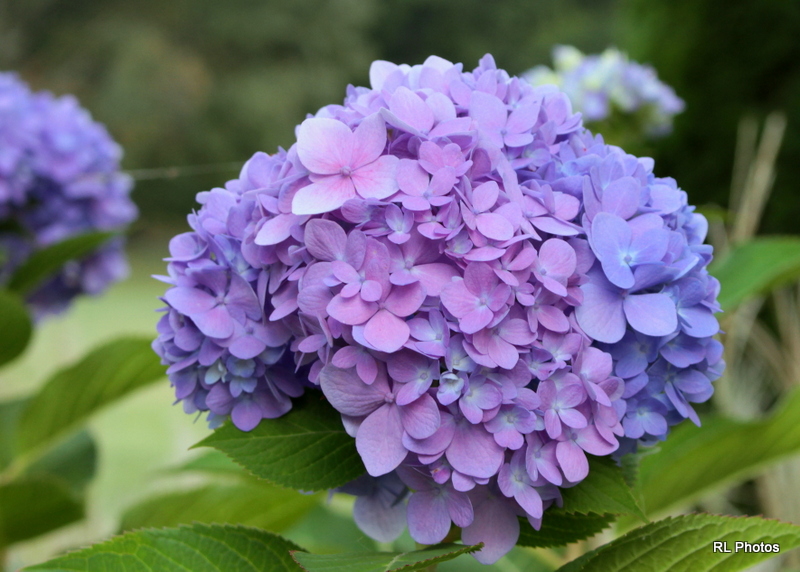Hydrangeas... will this Spring be different?
- by R. Lieber Gardeners have discovered that their hydrangeas have had few or no blooms after the last two bitter winters. Many have asked me about the late bloom or no bloom they experienced for the second year running. I wasn't much better off, with my beautiful Endless Summer ™ deciding that September and October would be the best time to cover itself in blooms, just in time for the first cold snap of the coming winter. While this is a discussion of hydrangea recovery after winter damage, there can be some other reasons for an all green hydrangea. Too much fertilization, especially nitrogen, can also make for lush growth and no blooms. If your hydrangea continue to be bloomless, even after a milder winter, you may want to reduce or change the fertilizer you have been using and get a soil test done. Not all hydrangeas are the same While all hydrangeas tend to look pretty alike to the lay person, they really come in several different categories . Some are more fussy than others and cannot be pruned out of season without losing all flowers for the next year. Others tolerate being mowed down to the ground every few years. Unlike many gardener's timid pruning attempts, winter damage is often Mother Nature's Some hydrangeas will only bloom on "old" wood. That just means the stems and branches that formed this year or last. If you prune away this old wood you also prune away the flower bud beginnings that formed inside of those stems during the summer months. Many people have pruned their hydrangeas in early spring assuming all that brown wood they see is dead, when it probably isn't! The remaining stems don't have the cells for making buds inside yet and can only form new leaves! Still other hydrangeas will grow their flowers on both old wood and "new" wood. New wood is the new branches that form once springtime growth resumes. If mistakenly pruned at the wrong time the newer branches will still form flowers. If you don't know what type you have, you won't know when it is safe to prune, or even if you can avoid pruning at all. Let's look at the 4 groups of hydrangea and pruning and caring for each of the shrubby beauties. Types of hydrangeas that grow here in East Tennessee Oak Leaf Hydrangea - This hydrangea is tough and loves more sunshine than all the others because it is a true native to eastern TN. Unlike other hydrangeas, this one thrives in dryer, sunny conditions. It is my favorite for its beautiful fall leaf color and huge flower heads. It can easily die from root rot if it sits in wet soil for any length of time. Their leaf shape gives them their name, and makes them the easiest to identify. They have large flower heads that are a somewhat rounded cone shape; larger at the top and tapering to the end. They keep their colored fall leaves for a while and can provide a little winter interest and prefer drier and sunnier conditions than the rest. Macrphylla (aka Mophead or Lacecap) - These are also referred to as the Bigleaf, French, or Garden hydrangea . The quintessential old fashioned southern garden hydrangea is in this group which have large round or pompom shaped flowers. Big flower heads are their hallmark, and these are generally speaking the most colorful. There are many popular varieties of these, and the Endless Summer series is part of this group. They need more shade and more water to do well than the others. Paniculata - These can really get big but tolerate pruning enough to be turned into tree form. The best known of these are the PeeGees and Limelight™. They also tend to have somewhat cone shaped flower heads that taper at the end rather than big round balls. Hydrangea arborescens - This is another native type and is sometimes also referred to as "Wild Hydrangea." You may have seen them in large groups making up a tall blooming hedge. Annabelle™ is the most popular variety sold. They require a little more sun protection to thrive and do well in dappled sun. They too have huge round flower heads. Pruning and care, even after a bad winter The first two types of hydrangea we will discuss are the ones that bloom mostly on new wood and can tolerate a bad winter and keep on blooming. They are also pretty easy to care for. One of the easiest hydrangeas, when it comes to recovering from winter damage or the laissez fair gardener, is the arborescens. Any damage can be pruned back all the way to the ground, and a new shrub will form with flowers right before your eyes. It may get floppy with the weight of the flowers if this is done repeatedly, so it is best to leave some stems or limit severe pruning to every 3-4 years to get a few that are bigger and stronger stems. It will thrive more easily when it gets a full morning of sun and then afternoon shading. Native Oak Leaf hydrangeas are one of the toughest hydrangeas once established. One in my neighborhood has gone through county roadside cutbacks, from shade beneath a tree to being on its own in all day sun and has still put out flower after flower in spite of the winter damage it suffered. Unlike the others, this type prefers more sun and drier conditions. It's downfall is how fast it can be killed by root rot if it is in soil that stays wet for more than a few hours at a time. Pruning them requires attention A different approach to pruning will be needed for the next two types of Hydrangeas. The Paniculata hydrangeas are the ones that can be pruned almost at any time and still form some blooms. They will recover from winter damage and bloom pretty much on schedule as long as you don't prune just as flower buds are appearing. They are usually the biggest hydrangeas, so don't plant them close to other plants or each other. Some afternoon shade and watering attention in dry spells will reward you with giant flower covered shrubs year after year. The Lacecaps and Mophead varieties have the largest variety of color and sizes, which makes them very popular with collectors and garden centers. They aren't as tough as the native types and don't do as well if pruned by a gardener or mother nature in the winter. The exception is the more recent everblooming types which also grow flowers on new wood: the Endless Summer series of hydrangeas. Older varieties may not be pruned after August 1 in our area in order to keep those old wood buds. The Endless Summer types, like with the oak leaf, will reward you with new growth buds if you are patient enough. For both kinds, waiting before doing a spring clean up on them is well worth the ugly sight of those brown sticks. All of the hydrangeas can stop blooming after a extremely cold winter or one that extended into a spring with multiple late damaging freezes because the plants will have been damaged right to the ground. The only thing to do in this case is to support new plant growth and wait until the next year and better conditions, knowing it won't happen all the time here in Tennessee. The biggest single lesson we gardeners can learn is that patience truly is a virtue. There is always next year! |



 pruning tool, and she can be brutal! Some gardeners may have made it worse and pruned away the last few flower buds while "tidying up." Some hydrangeas can survive winter damage and still flower, albeit a little (or a lot ) later and flower heads may be a bit smaller.
pruning tool, and she can be brutal! Some gardeners may have made it worse and pruned away the last few flower buds while "tidying up." Some hydrangeas can survive winter damage and still flower, albeit a little (or a lot ) later and flower heads may be a bit smaller. to timing, and a bad winter may damage the old stems especially at the tops. The best rule to follow is not to ever cut them back after August 1 to keep buds that have already been forming. With severe winter damage wait until a longer warm weather stretch has encouraged buds to show and you'll find many of the dead branches actually have buds. You may need to wait until well into spring before it fully shows new growth. The harsher the winter the longer the wait feels, but it is worth it.
to timing, and a bad winter may damage the old stems especially at the tops. The best rule to follow is not to ever cut them back after August 1 to keep buds that have already been forming. With severe winter damage wait until a longer warm weather stretch has encouraged buds to show and you'll find many of the dead branches actually have buds. You may need to wait until well into spring before it fully shows new growth. The harsher the winter the longer the wait feels, but it is worth it.